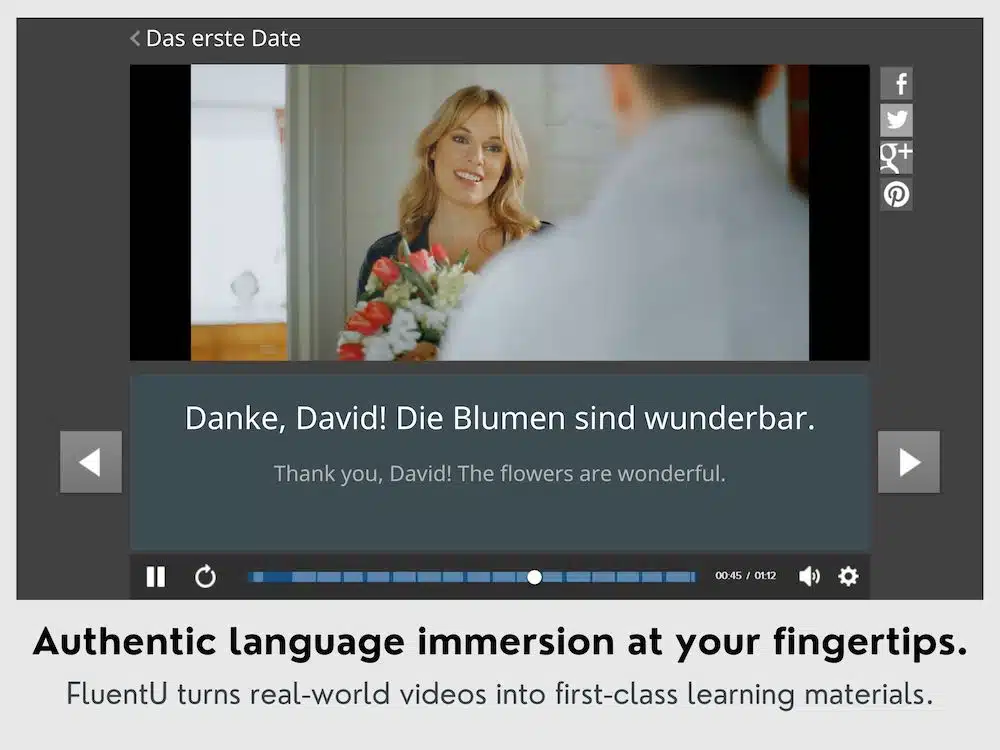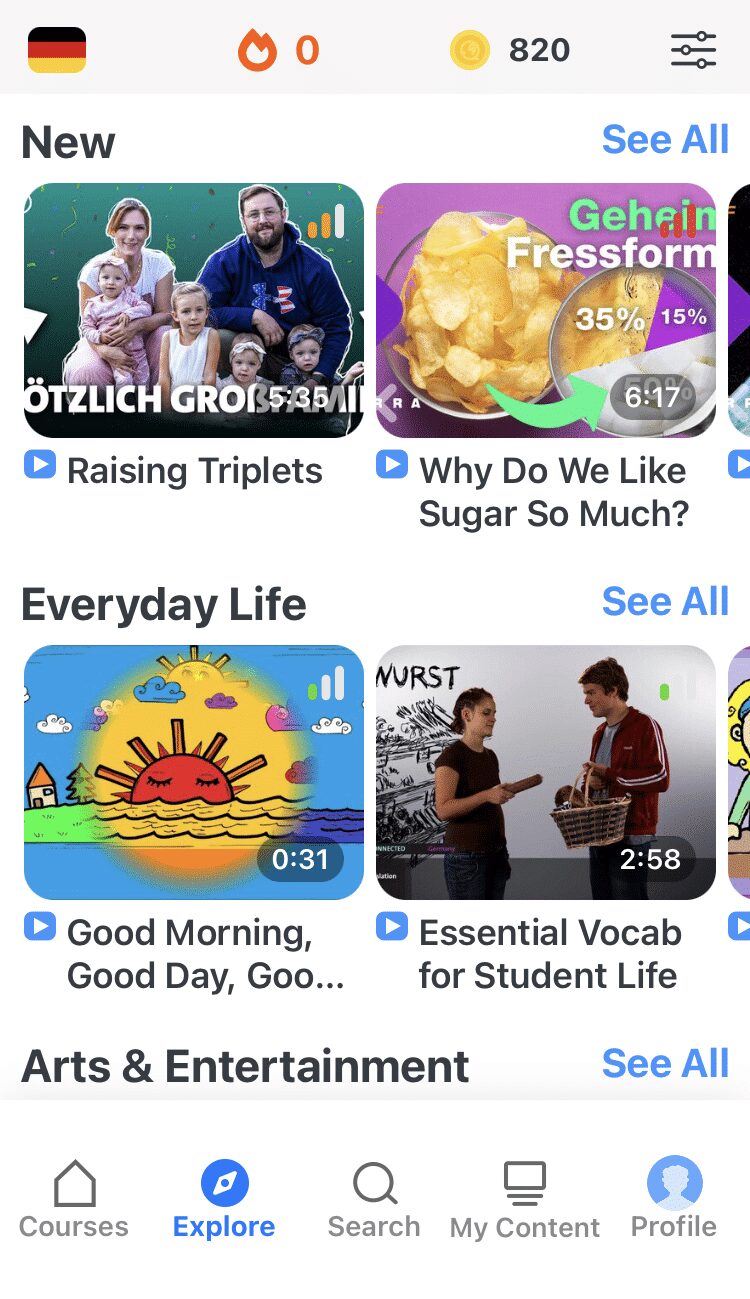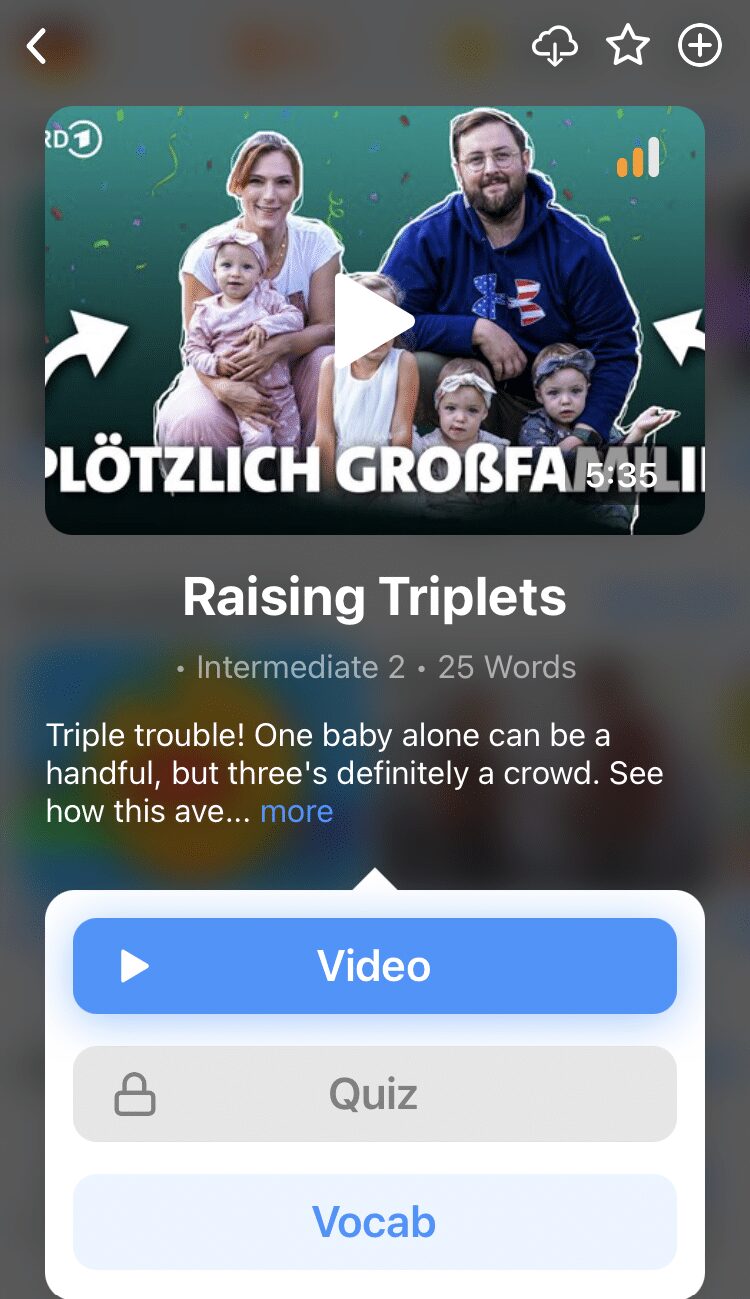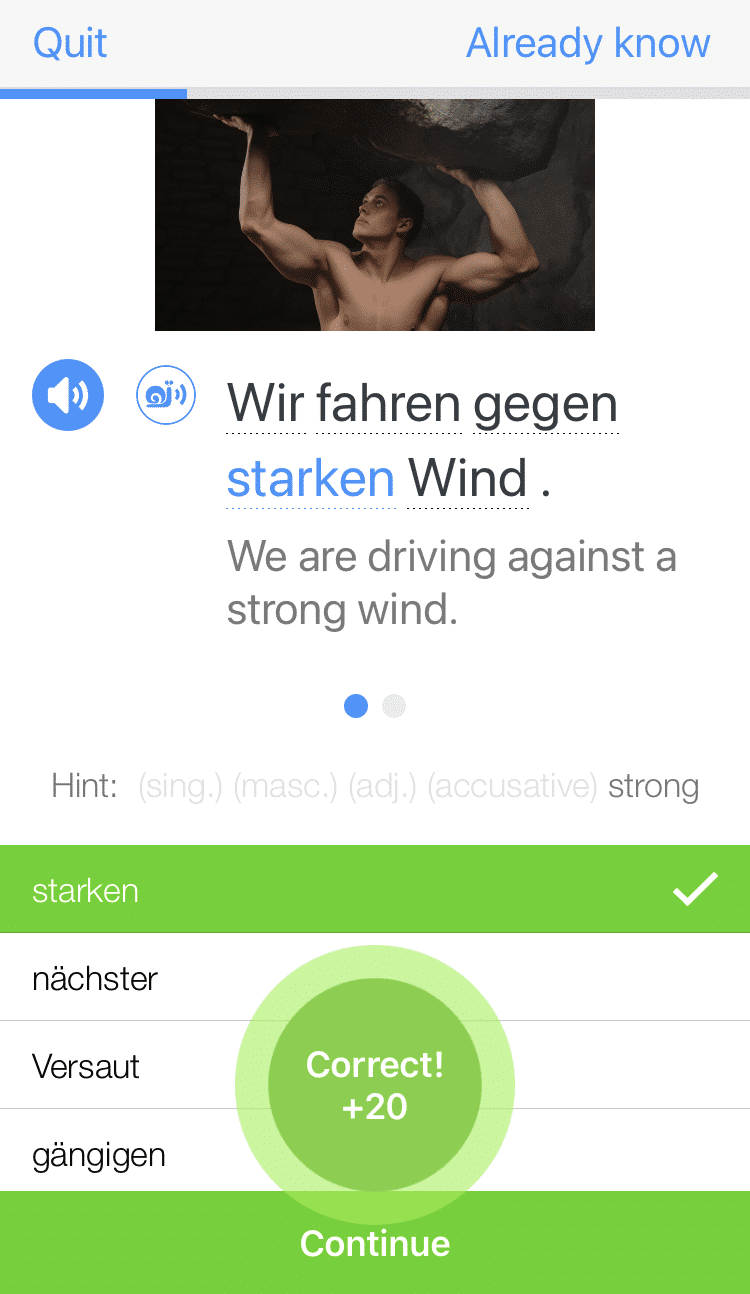How to Order Food in German
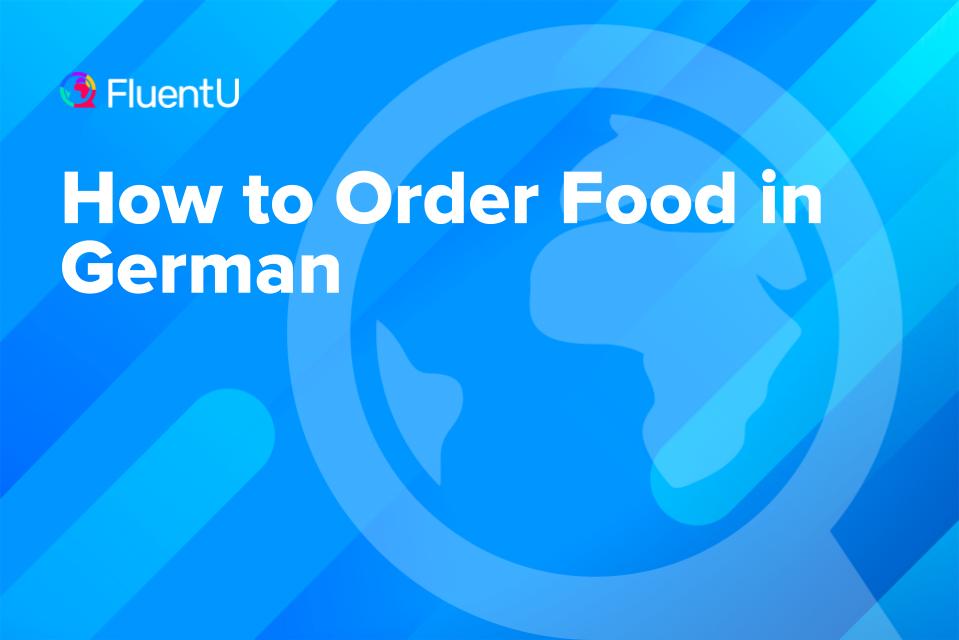
One of the most exciting things about adventuring around a new country is getting to taste all the great regional specialties that you might never have even heard of. In Germany, that includes a lot of hearty meat dishes and regional variations on comfort food classics.
Even if you aren’t jetting off to Germany anytime soon, learning how to order food is still an essential step in becoming fluent. So with that in mind, here’s a complete guide to ordering food in German.
Download: This blog post is available as a convenient and portable PDF that you can take anywhere. Click here to get a copy. (Download)
Arriving at the Restaurant
If the restaurant is popular, it may be a good idea to call ahead or pop in beforehand to reserve a spot.
Kann ich einen Tisch reservieren, bitte?
(Can I please reserve a table?)
Haben Sie Platz für zwei?
/ drei?
/ vier?
(Do you have room for two/three/four?)
Wir sind zu zweit/dritt/viert.
(There are two/three/four of us.)
In German, you need to use a different form of the number when you’re saying how many people you are.
Reading the German Menu
Once you’re all sat down, it’s time to open the menu. Here’s the vocab you’ll want to know:
| German | English |
|---|---|
| die Speisekarte | Menu |
| das Menü | Set meal |
| das Essen | Food |
| das Hauptgericht | Main course |
| die Vorspeise | Starter |
| der Nachtisch | Dessert |
| das Frühstück | Breakfast |
| das Mittagessen | Lunch |
| das Abendessen | Dinner |
| Vegetarisch | Vegetarian |
| Zum mitnehmen, bitte | To take away, please |
| das Fleisch | Meat |
| das Rindfleisch | Beef |
| das Schweinefleisch | Pork |
| das Lamm | Lamb |
| das Hähnchen | Chicken |
| die Pute | Turkey |
| das Wildfleisch | Game |
| der Fisch | Fish |
| das Obst | Fruit |
| der Apfel | Apple |
| die Banane | Banana |
| die Orange | Orange |
| die Erdbeeren | Strawberries |
| die Trauben | Grapes |
| das Gemüse | Vegetables |
| die Kartoffel | Potato |
| die Karotte / die Möhre | Carrot |
| der Pilz / der Champignon | Mushroom |
| der Kohl / das Kraut | Cabbage |
| die Bohnen | Beans |
| die Erbsen | Peas |
| das Getränk | Drink |
| das Wasser | Water |
| die Milch | Milk |
| das Bier | Beer |
| der Tee | Tea |
| Der Kaffee | Coffee |
| das Cola | Coca-Cola |
| die Limo | Lemonade |
To learn more German food words, check out these posts:
Food in German: 150 Essential Vocabulary Words | FluentU German Blog
Curious about food in German? Then check out this post, where we include the 150 most common German food vocabulary words for your grocery shopping, cooking and dining…
20 Fruits in German | FluentU German Blog
Do you know how to talk about fruits in German? Fruits are found in dishes, desserts, and even drinks in German-speaking countries. In this post, you’ll learn 20 common…
German Specialties
If you aren’t so familiar with famous German dishes, this list will keep you right.
| German | English |
|---|---|
| die Bratwurst | Grilled sausage |
| der Senf | German-style mustard |
| Süßsenf | Sweet mustard |
| Weißwurst | White sausage |
| Bretzeln | Pretzels |
| die Kohlroulade | Cabbage roll |
| das Schnitzel | Thin slice of meat (traditionally veal but usually pork) that is covered in breadcrumbs and fried |
| die Bratkartoffeln | Side dish of fried potatoes, often served with bacon and onions |
| das Sauerkraut | Fermented cabbage |
| die Schweinshaxe | Grilled knuckle of pork |
| Eisbein | Boiled knuckle of pork |
| die Käsespätzle | Handmade noodles topped with cheese (vegetarian) |
How to Order in German
German Conditional Tense | FluentU German Blog
The German conditional tense allows talk about your colorful fantasies in German—or any other hypothetical situation, really. Find out what makes up this wonderful…
” target=”_blank” rel=”noopener”>The German conditional tense is used to explain that something might happen. If there is a possibility something will occur, and we want to get that across, then we use the conditional.
In English we generally do this by using the verb “would.” This is also the case in German, and the verb is würden.
Ich würde den Rock kaufen.
(I would buy the skirt.)
Er würde nach Mexiko.
(He would go to Mexico.)
We need this tense when ordering food because we want to say we would like something. However, we don’t use würden because there are two set phrases for “would like”:
Ich möchte
(I would like)
Ich hätte gern
(I would like)
It’s super easy to construct sentences using these phrases. You simply start your sentence off with either one. Here are a few (food-related!) examples.
Ich hätte gern zwei Brötchen bitte.
(I would like two bread buns please.)
Ich möchte einen Apfelsaft.
(I would like an apple juice.)
Ich hätte gern 200 Gramm Käse.
(I would like 200 grams of cheese.)
Ich möchte einen Tisch um 20 Uhr reservieren.
(I would like to reserve a table at 8 p.m.)
Notice that, while these two phrases are almost interchangeable, hätte gern cannot be used with another verb.
So you can’t say ich hätte gern einen Tisch reservieren (I’d like to have a table reserve), but you can say: ich möchte einen Tisch or ich hätte gern einen Tisch (I’d like a table).
Making Special Requests in German
Here are some really useful German phrases if you have any special dietary requirements:
Ist das Gericht glutenfrei?
/ nussfrei?
(Is the dish gluten-free/free from nuts?)
Gibt es etwas Veganes?
(Is there a vegan option?)
Etwas is usually shortened to was and the entire phrase would usually be pronounced: Gibt’s was Veganes?
Ich möchte es lieber ohne scharf.
(I’d prefer it not too spicy.)
You might sometimes be asked: Mit scharf? (Would you like it spicy?)
This is actually not “proper” German, but you’ll hear it at fast food kiosks in Berlin, for example. If you prefer, you could use the more grammatical phrase nicht scharf at a restaurant.
Ist es möglich, das Gericht ohne das Spiegelei?
/ die Pommes?
/ die Bratensoße zu haben?
(Is it possible to have the dish without the fried egg/french fries/gravy?)
German Phrases for During the Meal
In Germany, greeting everyone at the beginning of a meal is a custom. Use these phrases to adhere to the German etiquette:
Guten Appetit!
(Enjoy your meal!)
Mahlzeit!
(Mealtime greeting)
This word literally means “mealtime” and comes from the archaic phrase gesegnete Mahlzeit (blessed mealtime).
Nowadays, it’s used as a salutation, so if you bump into someone around lunch or dinner—especially if you’re on a lunch break from work—then you would greet them by saying “Mahlzeit” rather than “hallo” or “guten Tag.”
To respond, you can either repeat “Mahlzeit” or say “danke” (thank you).
Mahlzeit can also be used as a negative term. If two people see something that might put them off from eating, they may sarcastically say “Mahlzeit!” to one another.
This salutation can be used in Northern Germany even when there’s no connection to food or mealtimes. However, it’s only ever used in Southern Germany and Austria when there is an obvious connection to food.
Let’s look at more phrases:
Kannst du mir das Salz geben, bitte?
(Can you please pass me the salt?)
Schmeckt es dir?
(Do you like it?)
*This can also be translated as “Is it tasty?”
Entschuldigung!
(Excuse me!)
To be really formal you can also say: Entschuldigen Sie bitte (Excuse me).
Können wir mehr Wasser haben, bitte?
(Can we have more water, please?)
At the End of the Meal
When you’re all done, it’s time to wrap up.
die Rechnung
(the check)
das Trinkgeld
(the tip)
To tip in Germany, you just need to round up your bill to the nearest euro.
Ich möchte zahlen.
(I’d like to pay.)
Here are some additional websites that provide a lot of extra information about ordering food in German. Check them out and see how many of the above words and phrases you see!
Useful Resources for Learning How to Order Food in German
YouTube is actually one of the top resources you can check out for extra information about ordering food in German.
There are many videos where actors role-play at a restaurant or cafe scenario. This one from “Get Germanized” offers a lot of great vocabulary and grammar tips.
There’s also FluentU, where you can easily find video content about food and restaurants.
FluentU takes authentic videos—like music videos, movie trailers, news and inspiring talks—and turns them into personalized language learning lessons.
You can try FluentU for free for 2 weeks. Check out the website or download the iOS app or Android app.
P.S. Click here to take advantage of our current sale! (Expires at the end of this month.)
Here are other resources for learning more vocabulary for ordering food in German:
- WikiHow. This WikiHow on ordering food in Germany has handy pictures to help guide you through the steps.
- Food blogs. German food blogs can inspire you to get into the kitchen. While you’re working through their wonderful recipes, you’ll also be picking up a lot of vocabulary you can use when eating out.
- Role-playing. If you want to practice ordering at home, one great idea would be to set up a scenario and role-play with some friends or classmates. Role play is a great way to practice your speaking in real-life scenarios, while keeping it fun and laid back.
Now you can impress any German waiters you may come across on your travels! Is anyone else’s tummy rumbling?
This post has got me hungry… time to pull out my best German cooking skills in the kitchen!
Download: This blog post is available as a convenient and portable PDF that you can take anywhere. Click here to get a copy. (Download)
And One More Thing...
Want to know the key to learning German effectively?
It's using the right content and tools, like FluentU has to offer! Browse hundreds of videos, take endless quizzes and master the German language faster than you've ever imagine!
Watching a fun video, but having trouble understanding it? FluentU brings native videos within reach with interactive subtitles.
You can tap on any word to look it up instantly. Every definition has examples that have been written to help you understand how the word is used. If you see an interesting word you don't know, you can add it to a vocabulary list.
And FluentU isn't just for watching videos. It's a complete platform for learning. It's designed to effectively teach you all the vocabulary from any video. Swipe left or right to see more examples of the word you're on.
The best part is that FluentU keeps track of the vocabulary that you're learning, and gives you extra practice with difficult words. It'll even remind you when it’s time to review what you’ve learned.
Start using the FluentU website on your computer or tablet or, better yet, download the FluentU app from the iTunes or Google Play store. Click here to take advantage of our current sale! (Expires at the end of this month.)
